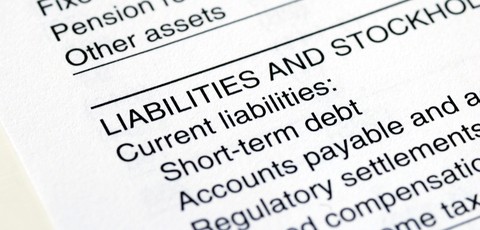A balance sheet is one of the fundamental pieces of accounting information you will become familiar with as a company owner. It provides a snapshot of your company’s financial situation at a specific time.

All limited companies are obliged to provide a balance sheet as part of their annual accounts, which must be submitted to Companies House, HMRC and shareholders each year.
What does a balance sheet consist of?
The balance sheet provides information on a company’s assets and liabilities at a given moment in time, typically your company’s year end. It includes details of:
- Fixed Assets – include machinery, equipment, buildings, and also intellectual property rights such as patents and trademarks.
- Current Assets – include stock, cash and money owed to the company. These assets fluctuate in value – sometimes significantly – from month to month.
- Current Liabilities – these are sums owed by the company, which fall due within 12 months. This includes money owed to HMRC (VAT, Corporation Tax, etc.), as well as to suppliers.
- Long-term Liabilities – these are sums owned by the company, which are due to be repaid after 12 months. It also includes retained profits after dividends, and share capital.
What do the final figures mean?
- The total value of the company’s assets should equal the total value of its liabilities, plus the value of the owners’ equity – hence the term ‘balance’ sheet.
- The owners’ funds includes money paid for the shares, and any retained profit in the company (after dividends have been paid).
- If your liabilities are more than your assets, your company owes more than it owns, which means it is trading insolvently.
What is a balance sheet used for?
- It does not provide details of transactions – this information is provided by the other key piece of accounting information – the Profit & Loss Account.
- It provides a good indicator of the company’s borrowing commitments, and can show if the company already has a high level of outstanding debt (gearing ratio).
- Shows how liquid a company’s assets are, and how easily such assets would be able to be converted into cash if required.
- Shows if the company has a lot of money owed to it, and therefore needs to tighten up its cashflow management.
- It can be a useful tool for comparing the performance of your company against your competitors.
Who may need to see your company balance sheet?
- All limited companies must provide a balance sheet as part of their annual accounts, which are submitted to Companies House and HMRC.
- Dormant limited companies still need to submit a balance sheet to Companies House each year, but not a P&L Account.
- Lenders, including banks, will need to see your company accounts. The balance sheet will show what your current borrowing commitments are.
- Potential investors will want to see your balance sheet, which is one indicator of the current health of the business.
Further Information
- Business Link has a Excel spreadsheet balance sheet template which you can customise (archived, but downloadable).
- Read our guide to the Profit & Loss Account.



Follow Company Bug